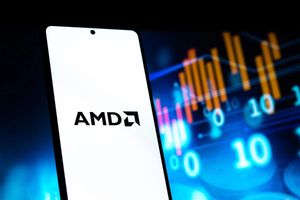 Photo from Unsplash
Photo from Unsplash
Originally Posted On: https://premierbusinessteam.com/the-urgent-need-for-advanced-cybersecurity-in-todays-business-landscape/
In an increasingly digitized world, businesses are becoming more vulnerable to cyber threats and attacks. The rapid pace of technological advancements has brought numerous benefits, but it has also created new challenges in terms of data security. As cybercriminals become more sophisticated, the need for advanced cybersecurity measures has become paramount. This article aims to highlight the importance of robust cybersecurity for businesses and provide insights into the steps businesses can take to protect themselves from cyber threats.
1. The Rising Threat Landscape
Cyber threats have evolved significantly over the past decade, with hackers employing advanced techniques to breach even the most secure systems. Data breaches, ransomware attacks, and phishing scams have become more prevalent, causing substantial financial and reputational damage to businesses. The increasing interconnectivity of devices through the Internet of Things (IoT) has further expanded the attack surface, making businesses more susceptible to cyberattacks.
2. The Cost of Cyber Attacks
The consequences of cyber attacks can be severe, both financially and operationally. A data breach can lead to direct financial losses, regulatory penalties, and legal repercussions. The damage to a company’s reputation can be equally devastating, resulting in customer loss, diminished trust, and long-term negative effects on the bottom line. Additionally, businesses may experience significant downtime and disruption to their operations, causing further financial strain and potential loss of productivity.
3. Safeguarding Sensitive Data
Businesses, regardless of their size, handle a vast amount of sensitive data, including customer information, trade secrets, and proprietary data. Protecting this valuable data is crucial to maintaining a competitive edge and complying with data privacy regulations. Implementing robust cybersecurity measures such as encryption, access controls, and regular data backups are essential to safeguarding sensitive information.
4. The Role of Employee Education
Employees play a critical role in the cybersecurity efforts of any organization. A single employee falling victim to a phishing scam or unknowingly downloading malware can compromise the entire network. It is vital for businesses to prioritize employee education and awareness training programs to ensure they understand common cyber threats, recognize potential red flags, and adopt secure practices such as strong password management and regular software updates.
5. Embracing Advanced Security Technologies
To stay ahead of cyber threats, businesses must leverage advanced security technologies. These include intrusion detection and prevention systems, next-generation firewalls, endpoint protection solutions, and advanced threat intelligence platforms. Artificial intelligence and machine learning algorithms can enhance threat detection and response capabilities, enabling businesses to identify and mitigate risks in real-time.
6. Regular Security Assessments and Incident Response
Implementing advanced cybersecurity measures is not a one-time effort. Businesses must conduct regular security assessments to identify vulnerabilities and address them proactively. In addition, having an incident response plan in place is crucial to minimize the impact of a potential breach. A well-defined plan outlines the steps to be taken in the event of a security incident, including containment, investigation, communication, and recovery.
The ever-evolving threat landscape demands that businesses prioritize advanced cybersecurity measures to protect their sensitive data, financial assets, and reputation. By understanding the rising threat landscape, implementing robust security technologies, educating employees, and conducting regular security assessments, businesses can significantly reduce their risk of falling victim to cyber attacks. Investing in advanced cybersecurity is not a choice but a necessity in today’s digital age, ensuring the long-term survival and success of any organization.
Cybersecurity Tools and Assessments to Consider
Managed Detection and Response (MDR) and Extended Detection and Response (XDR)
To enhance cybersecurity capabilities, businesses can consider implementing Managed Detection and Response (MDR) or Extended Detection and Response (XDR) solutions. MDR combines advanced threat detection technologies with skilled cybersecurity professionals who monitor networks and endpoints 24/7. MDR providers analyze network traffic, identify potential threats, and respond swiftly to mitigate risks. XDR takes it a step further by integrating data from multiple security solutions, including network, endpoint, and cloud, to provide a comprehensive view of the entire IT environment. These proactive solutions offer businesses the advantage of real-time threat detection, rapid incident response, and continuous monitoring to stay ahead of cyber threats.
Penetration Testing (Pen Test)
Penetration testing, often referred to as pen test, is a proactive cybersecurity practice that involves authorized simulated attacks on a system or network to identify vulnerabilities. Businesses can hire external security experts or employ an internal team to conduct these tests. Pen testing helps identify weaknesses in security infrastructure, applications, and processes, enabling organizations to address them before cybercriminals exploit them. Regular pen tests are essential to ensure that systems and networks remain resilient and secure against evolving threats.
Cybersecurity Insurance
While preventive measures are crucial, it is also prudent for businesses to consider cybersecurity insurance. Cybersecurity insurance, also known as cyber liability insurance, provides financial protection in the event of a cyber attack or data breach. It can cover costs associated with forensic investigations, legal fees, public relations, notification of affected individuals, and potential fines or lawsuits. Cybersecurity insurance helps mitigate the financial impact of a cyber incident and aids in the recovery process, allowing businesses to bounce back more swiftly.
Compliance with Regulations and Standards
In addition to securing sensitive data and implementing advanced cybersecurity measures, businesses must also ensure compliance with relevant regulations and standards. Compliance requirements vary across industries and jurisdictions. For instance, the General Data Protection Regulation (GDPR) in Europe imposes strict guidelines on data privacy, while the Health Insurance Portability and Accountability Act (HIPAA) in the United States focuses on protecting healthcare data. It is crucial for businesses to stay updated on the applicable regulations and standards, conduct regular audits, and implement necessary controls to maintain compliance. Non-compliance can result in severe penalties and damage to a company’s reputation.
In the face of ever-evolving cyber threats, businesses must adopt a multi-layered approach to cybersecurity. This includes leveraging advanced technologies like MDR and XDR, conducting regular penetration testing, considering cybersecurity insurance, and maintaining compliance with relevant regulations and standards. By combining these measures with employee education, robust security technologies, incident response planning, and continuous monitoring, businesses can significantly reduce the risk of cyber attacks and protect their valuable assets, data, and reputation. In today’s interconnected and digital landscape, investing in advanced cybersecurity practices is not a luxury but a necessity for businesses to thrive and maintain a competitive edge.







